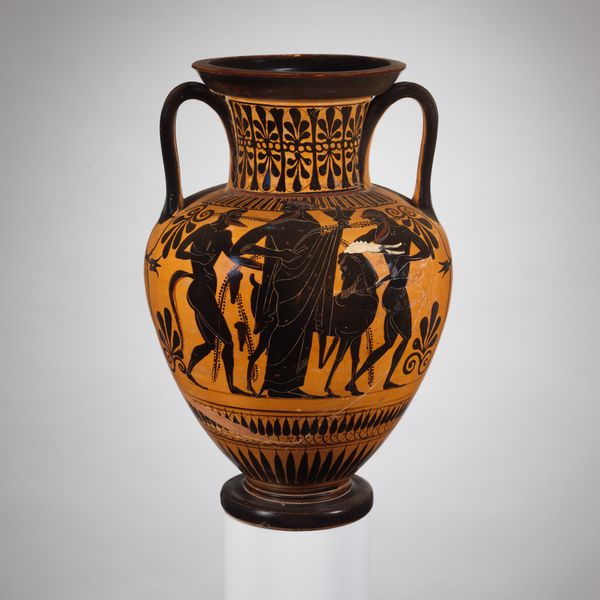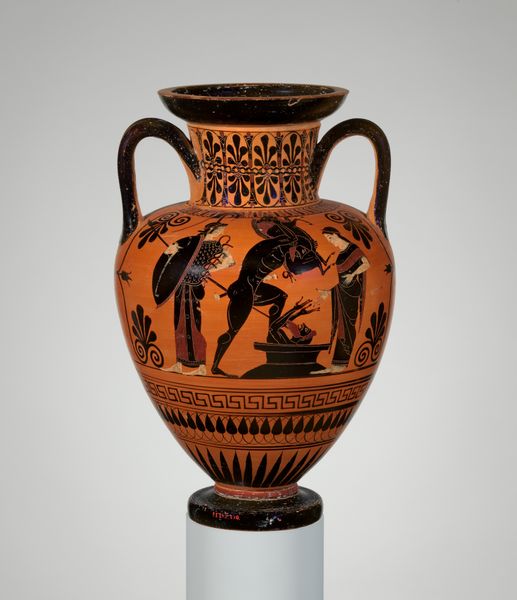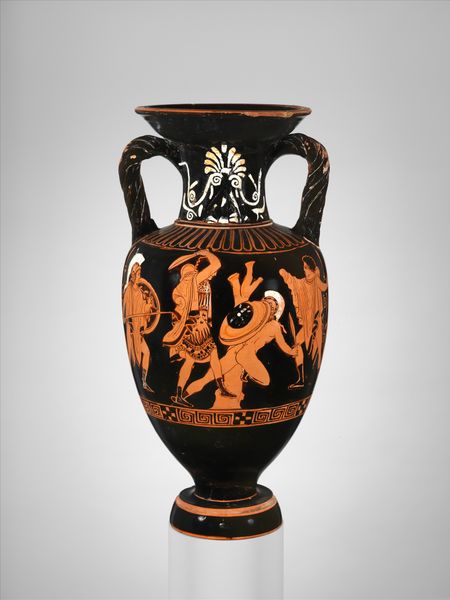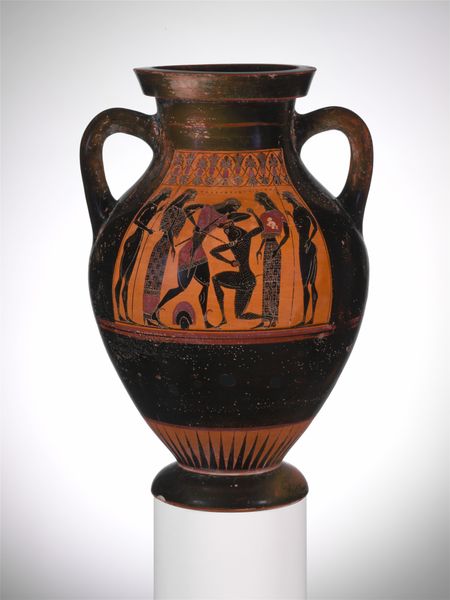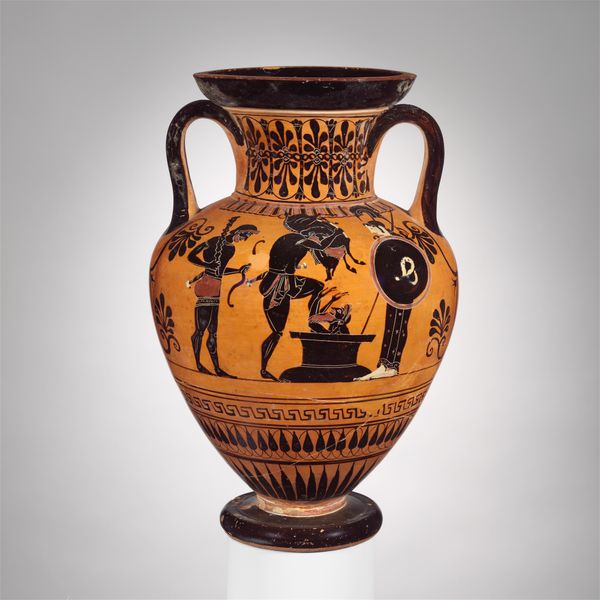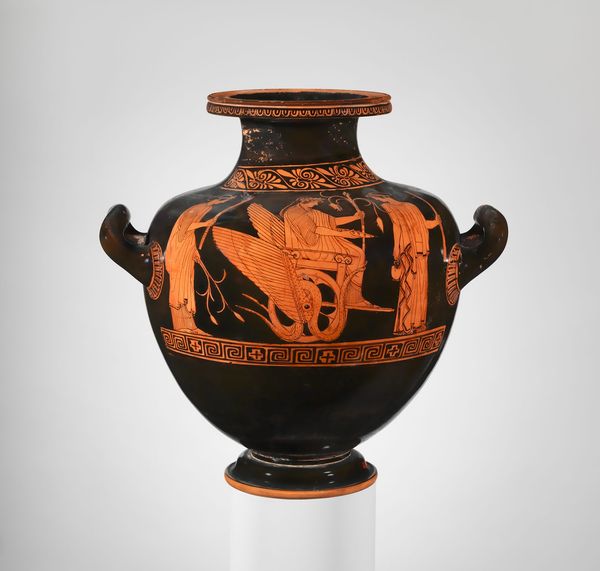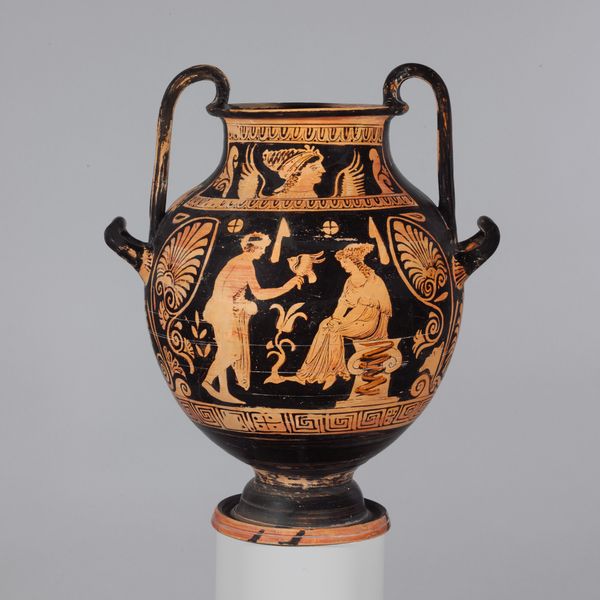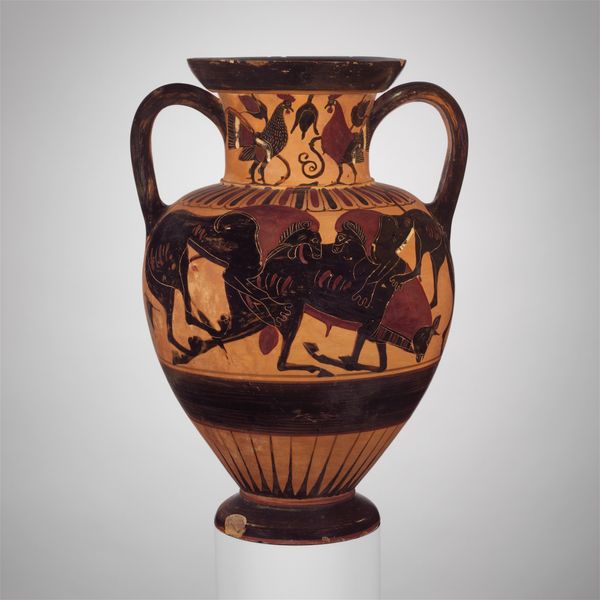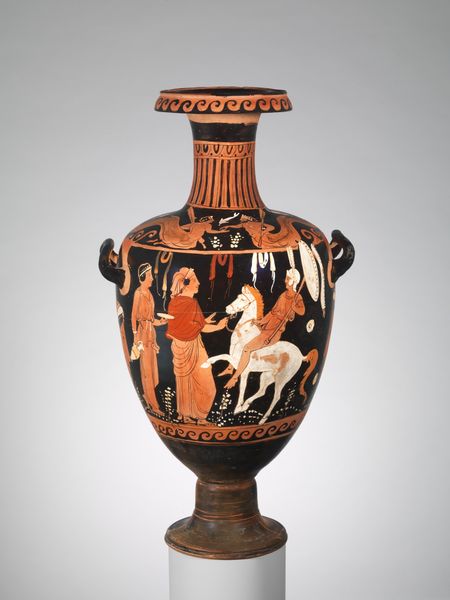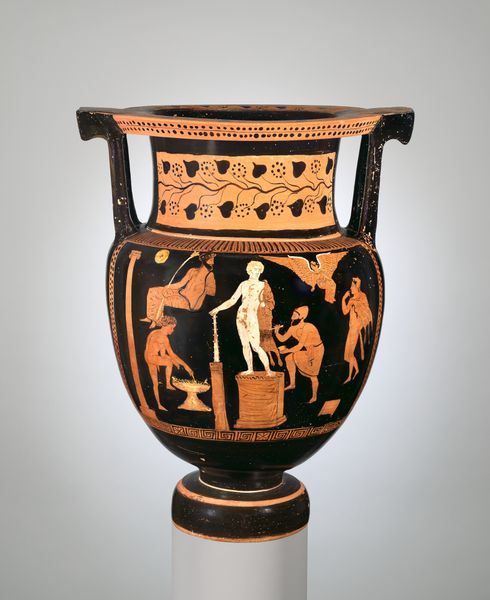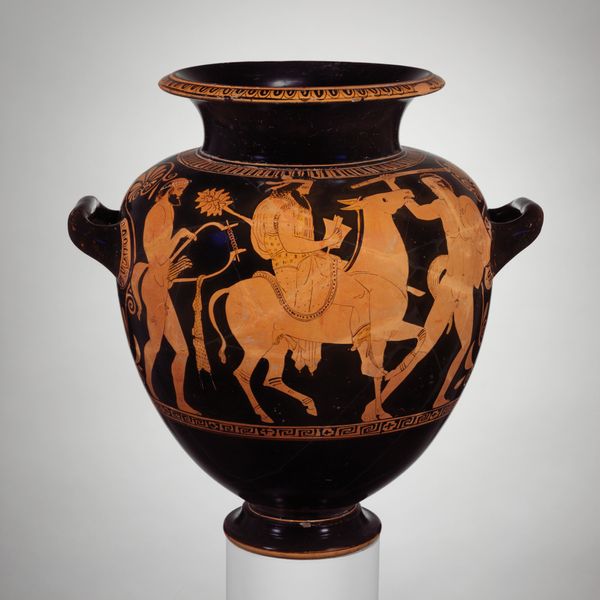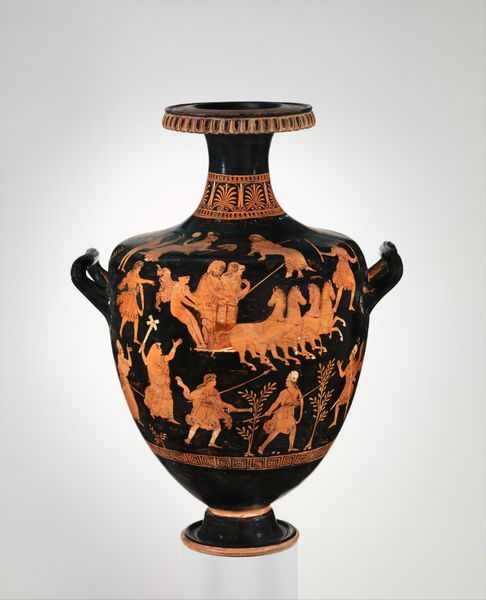
Terracotta neck-amphora with twisted handles (jar) 350 BC
0:00
0:00
drawing, ceramic
#
portrait
#
drawing
#
greek-and-roman-art
#
ceramic
#
vase
#
figuration
#
roman-art
#
3d shape
#
ancient-mediterranean
#
ceramic
#
genre-painting
Dimensions: H. 10 7/16 in. (26.5 cm)
Copyright: Public Domain
Curator: This is a terracotta neck-amphora with twisted handles dating back to around 350 BC. It's currently held at the Metropolitan Museum of Art and attributed to the Pilos Head Group. Editor: Oh, wow, it’s so striking. Immediately, I’m just vibing with the elegance. The black gloss with the reddish-orange figures is such a bold, theatrical statement, right? Curator: Absolutely. The choice of black and red is iconic for Attic pottery of this period. Red-figure technique, like what we see here, allowed for greater detail in depicting human forms and narratives, signaling a societal fascination with the human figure. We see that here with a contemplative male figure holding a staff, perhaps meant to depict a moment of leisure or philosophical contemplation. Editor: Leisure for sure. The twisted handles are whispering opulence too. I love the frieze with the lady's head; so classic. The rendering, with these small touches, it makes it very sophisticated. You know? Curator: Exactly. Consider the function of these amphorae as storage and transport vessels. By applying the red-figure technique onto an everyday object elevates it to a luxury good—speaking to a very specific type of consumer. I think we also must acknowledge what this object communicates about class, wealth, and even ideas surrounding gender within the specific context of Ancient Greece. Editor: So true! It also brings up questions for me, you know, like, what sort of personal stories are lost with the passage of time? What would this object 'say' if it could whisper the names of everyone that interacted with it. And why twisted handles? Is there symbolism, did the artists wanted to create something unique? So many little narratives contained here. Curator: Those kinds of questions are essential because, while the images and forms tell one story, what the context gives us challenges what we *think* we know about Greek culture. Editor: Totally. It’s amazing to think about this jar surviving for over two millennia. Imagine the stories this vessel has held, the changes it has witnessed. It is not just an object but it is something filled with energy, with stories. Curator: Indeed, these artifacts invite us to reconsider preconceived notions and imagine complex worlds beyond what's immediately apparent. That's why a dialogue across time like this is so critical. Editor: Exactly. Feeling connected to these people, like they were thinking the same big questions we still wrangle with today. It shrinks time. Makes me smile.
Comments
No comments
Be the first to comment and join the conversation on the ultimate creative platform.
